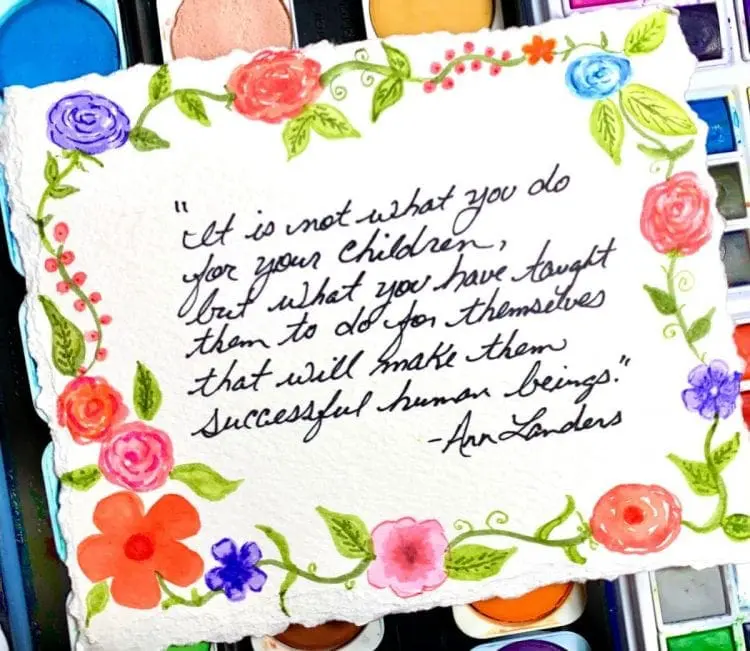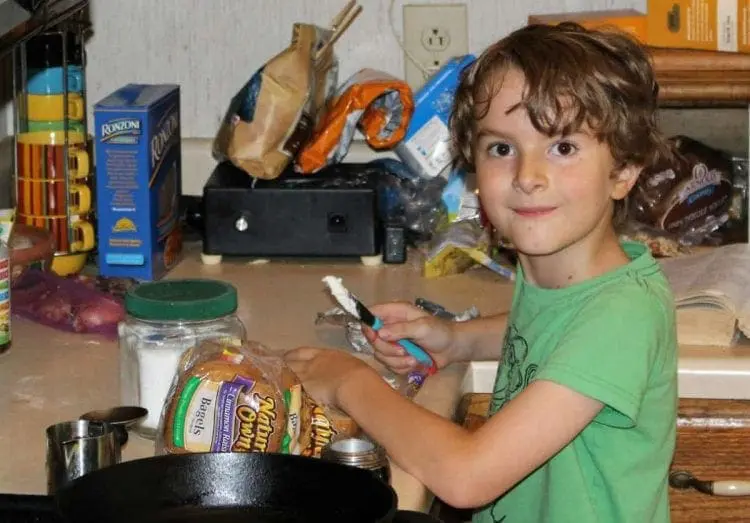According to Psychology Today, one of a parent’s biggest responsibilities is to teach your child independence. While your child will not fully be independent until they reach adulthood, it is important to ensure your child learns how to do things on their own as they develop. This should be an easy process if you support it, because toddlers love learning new skills and enjoy doing things on their own. Here are five tips for how to encourage independence in toddlers as well as a list of activities to promote independence in toddlers.
How To Encourage Independence In Toddlers

Encouraging independence in toddlers starts with just embracing a new mindset. It is often tough for busy parents to allow toddlers to do things for themselves, even though it takes longer and won’t be as perfect as when the parent does it! However, young children need extra time to develop new skills. Just slow down a bit and take pleasure in watching them show their curiosity and drive to do things themselves. Instead of saying, “Let me do it,” give your toddler the time and space they need to do it. Then congratulate them on their hard work and perseverance!
Teaching New Skills Every Week
Children look up to you. They watch their moms and dads do grown up things like shave, clean, wash dishes, and drive. While you cannot teach every grown up skill early on, teaching your child a new grown up skill every week is a fun way to teach your kids how to become independent. Show them how to pick up their toys and put them up one week and then let them do it by themselves. Focus on a new task each week from making the bed to putting dirty clothes in the hamper. This will teach them responsibility as well as independence.
Also, you don’t always have to pick the new skill. In fact, it is better to let them pick the skill most often because then you will know they are ready. If they want to try to tie their own shoe, it may be time to teach them. If they want to help set the table, it may be time to teach them. See how they do and add new skills to their daily routines once they seem like they have mastered previously challenging behaviors.

Start Giving Choices
As an independent adult, you have choices. You get to choose what you eat for dinner, what movie you go see, and when you go to bed. Independent thinkers need to be able to see the good and the bad in the choice they make. Give your little one the choice between two or three different options and you can encourage them to make good decisions in adolescence. Small choices allow them to feel more in control of their lives. Making their own choices teaches them to think for themselves and not wait for everything to be handed to them.
Many parents find that strong-willed children are quite difficult to keep safe. These toddlers seem bent on defying any parental order, even those that are clearly designed for safety. These children are so focused on establishing their independence, that they disregard many parental commands. A good parenting technique for these challenging children is to give them choices. Giving a child a choice between two equally safe options gives him the illusion of autonomy, but still forces him to comply with your wishes. A parent might tell her toddler, “We are going into the store now. Do you want me to carry you, or do you want to hold my hand and walk?” Either way he decides, the child will be safe, but he will feel that his wishes and independence are respected in this scenario.
Give Direction But Avoid Helping
If you are always there to do everything, it will be very difficult for your child to learn independence. When your toddler is struggling with tying their shoes or pouring their own milk, your first instinct is to step in and help. Instead of helping, give them a chance to do it themselves. If they are beginning to struggle offer tips so that your toddler can develop their problem-solving skills.
Make Sure Activities Are Age Appropriate
The idea here is to set kids up to succeed. The simple tasks should promote independence by being within reach. Think about activities that are age appropriate to preschoolers. A 2 year old will be much less capable of fine motor control than a 5 year old. Therefore, small tasks will need to be customized to their fine motor skills. A toddler’s desire to try new things usually is a good indicator that they may be ready to learn a new skill.
Early childhood skills should be basic and while they might require practicing to grow better, they need to be attainable. Always offer positive reinforcement for your child’s effort- “I see you working hard to try to tie your shoe. Good job. Practice makes perfect!”
Separate Some Of Your Toddler’s Belongings
Separating a few of your children’s belongings is a great way of encouraging independence in toddlers and it offers them the chance to take ownership. Toddlers become more independent by helping them become responsible for their own things. For example, give your children their own special plastic dishware that they can use for all their meals. They will take pride it being just for them. After meals, they can help wash their own dishes. This helps them learn to take responsibility for themselves and they will probably really enjoy it (even if you have to wash the dishes again after they are gone).
Activities To Encourage Independence

Dressing Themselves
Another fun way to encourage independence in toddlers is to have your child dress themselves for a fun event. You cannot expect the t shirts and pants they choose to match the first time, but its okay to think outside of the box. As you give guidance, your preschooler will learn how to choose prints and solids that go together and they may even be able to get ready for school without your assistance.
The first few times you let them dress themselves, you may want to make sure you don’t have anywhere too important to go and allow them to express their own fashion sense!
Dressing activities to encourage independence:
- Pick out your outfit today.
- Make sure the outfit includes underwear and socks if applicable.
- Learn how to tell which is the front and back of clothing items.
- Put on your own clothing.
- Put on your own socks.
- Put on your own shoes.
- Learn to tie shoes.
Have Toddlers Help With Their Own Hygiene
Of course, you’ll still want to make sure they get clean and smell nice, but you can start teach your kids about some parts of their hygiene that they can take care of themselves. Let them help with brushing their teeth and hair. This will help reinforce the idea that their body is their own and they must take care of it for their own benefit. You may still have to check up and see if they did a good enough job brushing and put on some finishing touches but they will be learning.
Hygiene activities to promote independence in toddlers:
- Wash your hands before every meal.
- Brush your hair (provide a soft bristle brush).
- Brush your teeth (you may still need to observe them and help finish up hard to reach spots).
- Wash your face with a warm wash cloth.
Help Your Toddler Learn Self Soothing
Toddlers tend to experience melt downs when they are overwhelmed. Help your toddler learn to calm himself down. He can remove himself from the situation and spend some time alone while he gets a handle on the situation. He can also learn to comfort himself with his favorite stuffed animal or song. Maybe closing his eyes and counting to 10 will help him regain his cool. Help your child learn to communicate his feelings in calm way to resolve the situation.
Self soothing activities to encourage independence:
- Take 5 deep breaths.
- Count to 10 slowly.
- Snuggle with a stuffed animal.
- Listen to calming music.
- Color a coloring page.
- Read a book.
- Take a nap.
How To Encourage Independent Play
Play is one of the best ways for children to learn. Of course, they will love playing with you and doing so is great for bonding. Sometimes however, they may seek independent play. It is nice to provide favorite toys that support toddler independence.
Encouraging independent play can help children develop important skills such as creativity, problem-solving, and self-reliance. First, ensure that the play area is safe and filled with age-appropriate toys and activities that spark your child’s interest. Next, allow for periods of the day where your child can play without any specific agenda or direction. This freedom can encourage them to explore and engage in independent play. Make yourself available for your child if they need assistance or guidance, but try not to intervene unnecessarily. Allow them the space to explore and play on their own. Positive reinforcement can encourage them to continue exploring and playing on their own.
Independent Play Activities:
- Simple, toddler-safe wooden puzzles
- Provide free play time
- Building blocks
- Doll tea time
- Pretend kitchen meal prep
- Crayons and coloring sheets
- LeapFrog Little Office Learning Center (my kids loved this one, affiliate link)
- Playtime with cardboard boxes
By creating a supportive environment and encouraging independence, you can help your child develop valuable skills while fostering their creativity and imagination. Some children may take longer to warm up to independent play. Be patient and provide gentle encouragement without pressure.
Conclusion
As your children grow up into older, wiser kids, it can be hard to let them go. However, it’s a parent’s duty to help children become independent and learn to live their own lives, make their own decisions, and take responsibility for their actions. No matter how far away the adult years seem, childhood years will go by fast! It is never too early to train your child how to be independent as long as you do it a supportive way. Often the best way to promote independence in toddlers is just to allow them to explore and be there to guide them as they go. What toddler parenting tips or tricks do you use when teaching your child?
Related Posts:


Robin (Masshole Mommy) says
All good tips. I swear that my 5 year old still struggles with dressing himself. Not that he can’t do it, but stuff is almost always backwards or inside out.